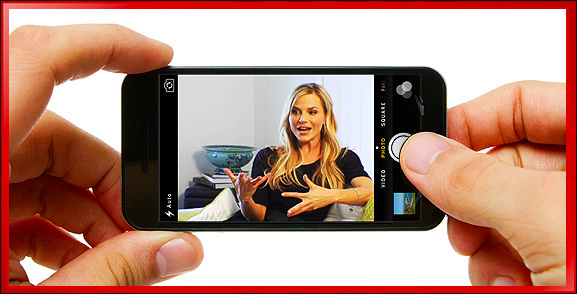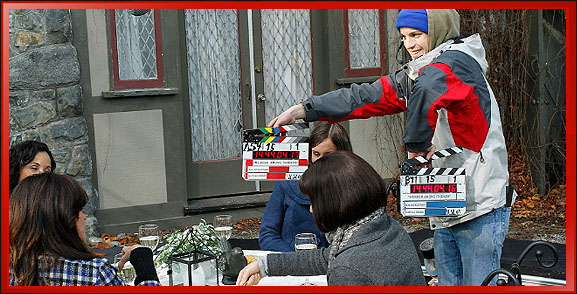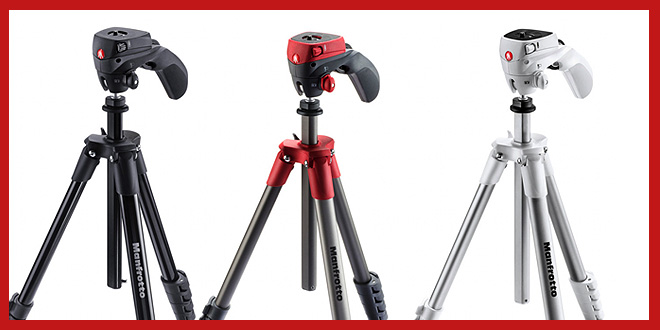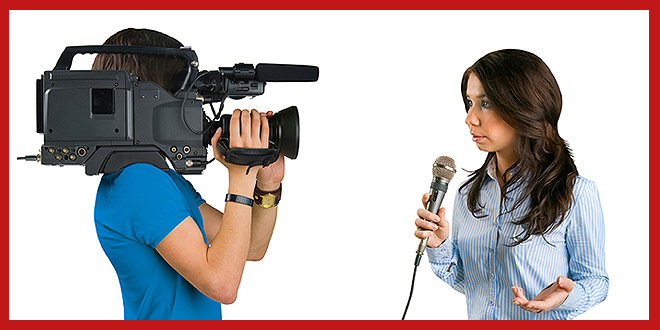So you have finished a script and you want to make a video using what you've written. This is great!
Good news – congratulations are already in order as you have already come a very long way. Now unless, you have your own crew and are going to be your own camera operating person then you will need to hire someone that will shoot your video.
Personally, I really like this approach, for a couple of reasons.
Guest Article Written by John Montana
First, you wear only one or two hat’s, instead of 10. As a video maker you will have so many responsibilities to make your video be great. Give that responsibility to an expert. Secondly, you are expanding the group of artists that help you make you video or film…your team.
So in order to make the best of this and get off to a wonderful start, here are 5 tips that will go a long way in making your shoot go smoothly.
1. Understand the Elements of a Basic Story
The Bottom Line is this: The video creator is first and foremost a storyteller. You must have a cohesive, compelling story to tell. This is not a difficult thing to do, as everyone has at least 1 real-life story to tell.

Whether it is a breakup, or a family trauma, or a secret desire… the list is endless. You have to trust that no matter how painful the story is, or how embarrassed you are of that story, it has been experienced before by someone else.
This is not a bad thing… it means that we are all connected in many ways and that these stories are indeed universal. We all have a unique story to tell that many people will relate to and identify with.
2. Have Your Shot List Ready
There are some video creators who will storyboard every single shot on their shot list. Alfred Hitchcock was notorious for this, as he was also notorious for giving his actors very little freedom in their movements and portrayal of their characters.

I don’t do this personally.
I write out a complete shot list of every scene that I want to video. What I am trying to say is this – ALWAYS finish your shot list before you get to your set. It will give you a road map of what you want, and how you will shoot your video. And because you are so well prepared, you can easily replace or remove a shot that you don’t need.
Or you will be inspired to get another shot…one you didn’t think of before. And when this happens, it always feels great.
3. Choose Meaningful Locations in Advance
I love shooting on real locations. The environment is real, as it is the world of the story. This is very helpful for your actors to believe the world they are in. But have it ready to show your video producer, so that he/she can prepare adequately.

Bring them to the location… let them see what you have in mind. This will help your producer immensely as it will show them HOW to shoot there…what types of shots will work from your list, and which ones won’t.
4. Know What Equipment You Will Likely Need
This usually will come to you when you are preparing your shot list. As the video creator, you should have an idea of how you want all your video shots to look. This usually means that you should have a basic working knowledge of the type of equipment you will need in order to get the shot.

Example: Your opening montage is a sweeping arc of the countryside that then leads into a house with two people eating dinner. You should know that this type of shot is going to require a crane, with the ability to swivel 180 degrees, and then also have it on wheels or some stable moving vehicle that this crane can be attached to. This will show the producer that you know what you want and it will be their job to try and get it for you.
But if you walk into a meeting with your producer, and just hand them a list without any clue as how to get it done, well, prepare for disappointment.
As a next step to learn more info on the kind of video equipment you will need, see this article “What Video Equipment Do I Need?” This list, which addresses all levels of budget, will supply you with an excellent first step for everything you need to know.
5. Learn How Communication Really Works
In my experience of making short videos, I honestly feel that this is the single most important thing you can bring to any meeting with your crew. The ability to communicate with your team on what you want and how you want to get it! And you MUST be able to shut up and then listen to what they have to say.

Communication is a two-way street. If you go in and start to demand all these things and be immovable…well all I can say is, good luck with that! So I will finish this up with giving you an example of something that happened to a dear friend of mine on a shoot that she was the line producer on.
The video creator had gotten a location for free, with the stipulation that they all be out by 7am, as that was when everyone came in to work for the day. It was an office building. This video creator was incredibly arrogant and unwilling to listen to his team. There was a certain moving shot that he wanted, but because of the tightness of the location, this was unattainable.
But he was so adamant and ego-maniacal that my friend had to go to the main producer, who then had a screaming match in front of the crew. He ultimately scrubbed the shot, but the damage had been done. He lost so much time arguing, that he lost 7 shots that he really needed.
So the video stank.
Moral of the story – be the supportive leader of the team! Listen to your team. Get a great film or video in the can. All this other stuff is just, excuse me, b.s.
Get Started!

So, these are 5 important tips that every video creator should have addressed before meeting with a video producer. If you take the time to prepare for your shoot correctly, then when you actually get to the set, things will flow much more smoothly that if you were careless.
Because if there is one thing you can always count on, is that there will be “challenges” that arise on the set. It is how well you deal with them that will make or break your video.
About The Author:
John Montana is an actor living with his wife in L.A. and has begun to make short films. His most recent film, “Hungry” has been accepted into 24 film festivals all over the world. Check out his short films at No Title Production Films.





